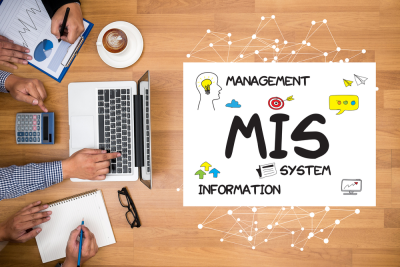Highlights:
- Augmented analytics utilizes artificial intelligence (AI) to automate the processes of data preparation, analysis, trend identification, and visualization.
- It generates automated insights, aids in performance assessment, pinpoints growth possibilities, and shapes comprehensive business strategies.
Data powers informed decision-making by uncovering issues, identifying opportunities, and assisting in performance assessment. The growing complexity of data poses challenges for traditional business intelligence platforms and self-serve BI in extracting valuable insights.
This dilemma leaves businesses facing a choice between compromising insight quality or dedicating substantial time to data preparation, analysis, and model building for detailed information. Here is where augmented analytics comes into the picture.
The article investigates a notable architectural shift in business intelligence, focusing on augmented analytics, its market dynamics, best practices, and practical use cases. Let’s begin with the essential information before delving into more detailed aspects.
What is Augmented Analytics?
Augmented analytics employs artificial intelligence (AI) to automate data preparation, analysis, trend identification, and visualization. It simplifies decision-making for non-technical business users, enabling them to harness data insights without the need for extensive analytics expertise.
This approach, suitable for businesses of all sizes and industries, differs from traditional analytics by eliminating the necessity for users to possess significant data experience.
It facilitates self-service analytics, empowering business users to conduct analysis independently, revolutionizing decision-making processes, and transforming the way businesses operate.
With a grasp of the basics, let’s dive into exploring the many factors that shape how this technology is evolving in the market.
Augmented Analytics Market Dynamics
According to Mordor Intelligence, the market for this technology is projected to grow from USD 23.27 billion in 2024 to an estimated USD 80.25 billion by 2029, with a CAGR of 28.09% during the forecast period,
Augmented analytics automates data preparation, discovery, and insight sharing using machine learning and natural language creation. It integrates AI into business intelligence tools, aiding data scientists and business users.
The rise in adoption is driven by the increasing complexity of company data, where AI enhances analysis speed and precision.
This analytics produces automated insights, facilitates performance evaluation, identifies growth opportunities, and forms comprehensive business strategies. It also swiftly addresses user inquiries, reducing dependence on data analysts.
Components like natural language processing (NLP) and conversational analytics enable non-technical specialists to interact with data and insights, fostering business recommendations. The market experienced a boost during the COVID-19 pandemic, prompting innovative approaches and contributing to revenue growth.
The information provided above indicates the dynamic nature of the augmented analytics market. Additionally, businesses must embrace new approaches for success post-Covid, emphasizing the importance of staying informed about evolving market trends.
Market trends
Augmented analytics, leveraging artificial intelligence, is driving substantial growth in the retail sector. Businesses gain critical insights by analyzing data from in-store security cameras, social media, consumer insights, and historical records.
The integration of AI enhances the scalability, speed, and efficiency of data, providing a sharper focus on customer needs. Retailers can now personalize multi-level rewards based on individual buying habits, feedback, and more, shaping more targeted business strategies.
Augmented intelligence systems enable the integration of retail technology across industries, emphasizing automated systems for data preparation, machine algorithms, deep learning, advanced analytics, and insight discovery.
This convergence addresses historical challenges in analytics adoption within the retail sector, fostering a more seamless and personalized customer experience.
To dissect this type of analytics effectively, one must adhere to best practices that drive business advancements.
Augmented Analytics Best Practices for Business Advancement
The below best practices unlock the full potential of augmented analytics and ensure that your business not only stays ahead of the curve but leads the way in leveraging data for success.
Let’s navigate the path to excellence with these best practices:
-
Begin by establishing a robust base for contemporary analytics
Modern business intelligence (BI) empowers users of all skill levels to answer their own questions, maintaining a balance between agility and the essential elements of security and governance. Artificial intelligence (AI) and machine learning (ML) features in modern BI platforms extend this paradigm, driving organizations towards a self-service environment for data inquiries.
-
Demonstrate success before expanding investments in AI analytics
When venturing into innovative ideas, start with a targeted test rather than aiming for a comprehensive solution. Begin with a specific scope, such as a particular department or use case, and expand once the investment’s value is demonstrated.
-
Clarify and educate to instill trust and enhance data literacy
Effectively integrating AI analytics into business processes requires building trust in these technologies and fostering data literacy. This involves instilling confidence in data scientists and educating novice users on interacting with and validating augmented analytics recommendations.
-
Foster success by promoting collaboration and building a strong community
As AI and machine learning features become part of existing workflows, strong communication between data champions and domain experts is crucial for success and adoption. Analysts creating dashboards should understand how users interact with AI features, promoting open communication about explanations and data.
These practices serve as channels for achieving success in the business landscape. The following use cases will illustrate this point.
Augmented Analytics Use Cases and Their Practical Significance
Explore these real-world use cases to gain insights into how this analytics operates in practical scenarios with its impact.
Here are the use cases:
-
Manufacturing
Scenario: In manufacturing, doing well largely depends on having a strong and reliable supply chain. Unfortunately, recent times have seen a lot of challenges for these supply chains due to rising prices and global uncertainties.
Solution: Augmented analytics is like a super tool that can really boost how we analyze and use data in the supply chain. For manufacturers, this means improvements in important areas like making sure the quality is top-notch, predicting when machines need maintenance, creating better production schedules, and ultimately increasing profits.
This analytics can make a big difference for manufacturers in challenging times, making things run smoother and more successful.
-
Healthcare
Scenario: In healthcare, the widespread adoption of electronic medical records has transformed the industry into a data-centric realm. However, for many healthcare professionals, delving into this data can be a time-consuming task, and in healthcare, time is of the essence as it directly impacts lives.
Solution: Augmented analytics can ease this challenge, empowering healthcare organizations to enhance patient care, forecast disease outbreaks, and streamline clinical trials. By leveraging this, organizations can not only improve the well-being of their patients but also strengthen their own financial stability.
-
Media and entertainment
Scenario: In media and entertainment, the shift towards digital platforms is unmistakable. Prominent examples include
- The ascendance of Netflix as a primary content creator
- Disney’s successful introduction of Disney+
- Spotify’s significant influence on the music scene
Solution: Augmented analytics plays a pivotal role in enabling content providers to gain profound insights into viewer behavior, facilitating the optimization of marketing campaigns, and enhancing customer service. By harnessing these capabilities, media and entertainment professionals can navigate the complexities of the digital realm, ensuring a more nuanced understanding of audience preferences and more effective strategies for content delivery.
-
Retail
Scenario: In the retail sector, the key to success lies in grasping your customer’s desires promptly and adapting swiftly to fulfill them.
Solution: Augmented analytics proves beneficial in retail by aiding store managers in comprehending customer behavior and preferences. It facilitates the optimization of marketing initiatives and improves inventory management. The result is an elevated level of customer satisfaction, heightened brand loyalty, and, ultimately, increased revenue at the end of each business day.
-
Banking and financial services
Scenario: Data is prime in banking and financial services, encompassing a wealth of information from proprietary data to market data. Organizations in this sector stand to gain significantly by adopting a fresh perspective on analytics.
Solution: Augmented analytics proves particularly advantageous, playing a crucial role in enhancing capabilities such as fraud detection, customer segmentation, and risk management.
Closing Considerations
Data is the key to enhancing customer experiences and uncovering new revenue streams. Companies must excel at understanding data to stay competitive and successful.
Many businesses are turning to AI analytics technologies, including augmented analytics with machine learning, to improve data analysis and fortify their resilience in the face of challenges.
Finally, this technology acts as a user-friendly tool. It transforms human curiosity into clear, relevant information, enabling everyone in a company to confidently find answers to their business questions using data.
Enhance your expertise by accessing a range of valuable data-related whitepapers in our resource center.










